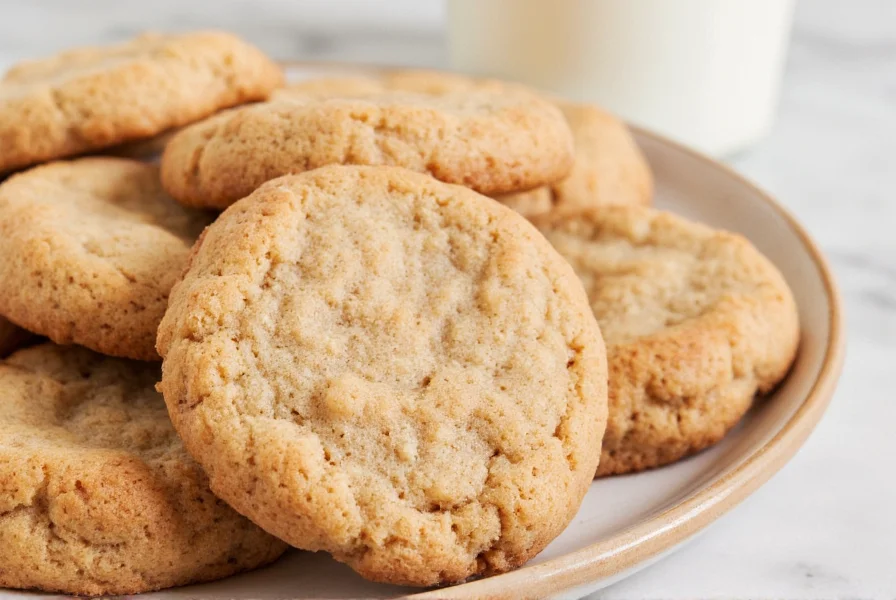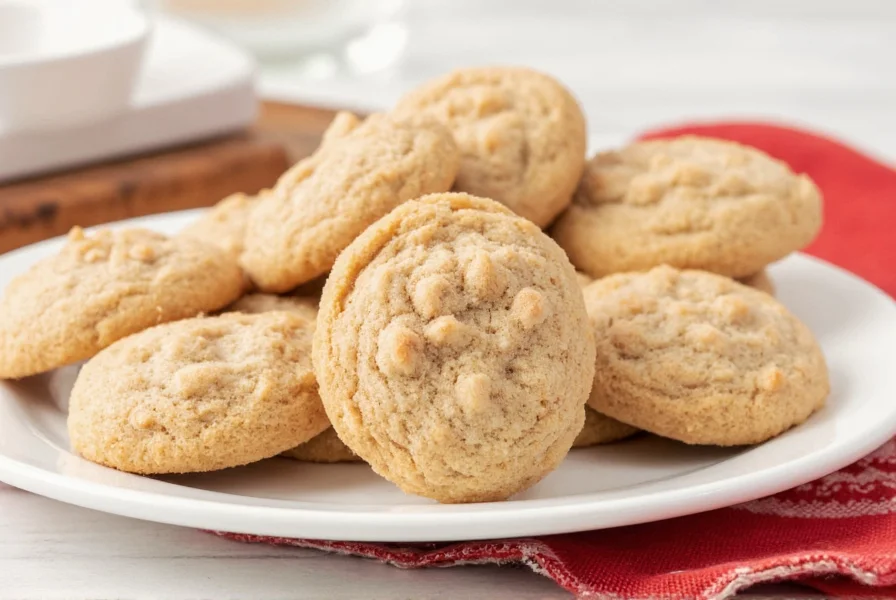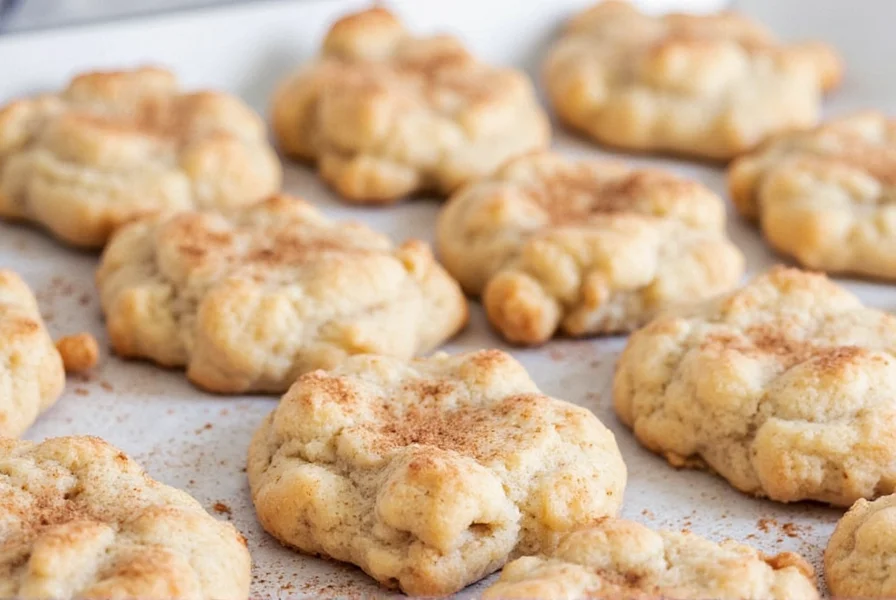The Science Behind Perfect Cinnamon Sugar Cookies
Understanding the chemistry of ingredients transforms good cookies into exceptional ones. The magic happens when the cinnamon-sugar coating caramelizes during baking, creating that signature crackled surface. Butter temperature is critical—softened butter (65-70°F) incorporates air properly when creamed with sugar, while melted butter creates denser cookies. The ideal cinnamon-to-sugar ratio is 1 part cinnamon to 4 parts sugar; exceeding this creates bitterness.
Essential Ingredients Breakdown
Quality ingredients make the difference between ordinary and extraordinary cinnamon sugar cookies:
| Ingredient | Function | Pro Tip |
|---|---|---|
| Unsalted butter | Creates tender texture and carries flavor | Use European-style (82% fat) for richer flavor |
| Granulated sugar | Aids spreading and caramelization | Keep 1/4 cup separate for coating |
| Light brown sugar | Adds moisture and butterscotch notes | Pack firmly for consistent measurement |
| All-purpose flour | Provides structure | Spoon and level—don't scoop directly |
| Ceylon cinnamon | Milder, complex flavor vs. cassia | Use 1 tsp in dough + 1 tbsp for coating |
Step-by-Step Preparation Guide
Follow these professional techniques for consistently perfect cinnamon sugar cookies:
- Cream properly: Beat softened butter with both sugars for 3-4 minutes until light and fluffy. This incorporates air for proper rise.
- Chill the dough: Refrigerate for at least 2 hours (or overnight). This prevents excessive spreading and enhances flavor development.
- Portion consistently: Use a #40 cookie scoop (1.5 tbsp) for uniform baking. Inconsistent sizes lead to uneven results.
- Coat immediately before baking: Roll portions in cinnamon-sugar mixture right before placing on baking sheet. Delaying causes coating to dissolve.
- Bake strategically: Place cookies 2.5 inches apart on parchment-lined sheets. Rotate pans halfway through baking for even browning.

Troubleshooting Common Issues
Even experienced bakers encounter problems. Here's how to fix them:
- Flat, greasy cookies: Butter was too warm or dough wasn't chilled sufficiently. Refrigerate dough an additional 30 minutes.
- Dry, crumbly texture: Too much flour—measure using the spoon-and-level method. Add 1 tsp milk if dough feels dry.
- Bland cinnamon flavor: Use fresher cinnamon (replace every 6 months) or increase to 1.25 tsp in dough.
- Uneven browning: Oven temperature fluctuates—use an oven thermometer and rotate pans halfway through baking.
- Coating falls off: Dough portions weren't cold enough when coated. Chill scooped portions for 10 minutes before rolling.
Delicious Variations to Try
Elevate your classic cinnamon sugar cookies with these professional variations:
- Espresso-infused: Add 1 tsp instant espresso powder to dry ingredients for depth of flavor that complements cinnamon.
- Orange zest: Incorporate 1 tbsp finely grated orange zest into dough for bright citrus notes.
- Spiced sugar coating: Add 1/4 tsp nutmeg and 1/8 tsp cloves to the cinnamon-sugar mixture.
- Stuffed cookies: Place 1/2 tsp apple butter in center of each portion before rolling in sugar.
- Glazed version: Drizzle with simple icing (1 cup powdered sugar + 1.5 tbsp milk + 1/4 tsp cinnamon) after cooling.
Storage and Serving Recommendations
For optimal freshness and texture:
- Cool completely on wire racks before storing to prevent sogginess
- Store in airtight container with parchment between layers for up to 5 days
- Freeze baked cookies for up to 3 months; freeze dough portions for 2 months
- Serve slightly warm with milk or vanilla ice cream for the ultimate experience
- Revive day-old cookies by warming in 300°F oven for 3-5 minutes

Frequently Asked Questions
Can I use margarine instead of butter for cinnamon sugar cookies?
Butter provides superior flavor and texture that margarine cannot replicate. Margarine's higher water content creates spreadier, greasier cookies. For authentic cinnamon sugar cookies, unsalted butter is essential—substituting changes both texture and flavor profile significantly.
Why do my cinnamon sugar cookies spread too much?
Excessive spreading typically occurs when butter is too warm, dough wasn't chilled sufficiently, or too much sugar was used. Ensure butter is properly softened (65-70°F), chill dough for at least 2 hours, and measure ingredients precisely using the spoon-and-level method for flour.
What's the difference between Ceylon and cassia cinnamon for cookies?
Ceylon cinnamon ("true cinnamon") has a delicate, complex flavor with citrus notes and lower coumarin content. Cassia cinnamon is stronger, spicier, and more common but contains higher coumarin levels. For cookies, Ceylon provides more nuanced flavor, while cassia delivers bolder punch—many professional bakers use a 50/50 blend for balanced results.
How can I make gluten-free cinnamon sugar cookies?
Substitute all-purpose flour with a quality 1:1 gluten-free baking blend. Add 1/4 tsp xanthan gum if not included in the blend. Chill dough for 3+ hours as gluten-free dough spreads more easily. Expect slightly crumblier texture but excellent flavor when using this adaptation for gluten-free cinnamon sugar cookies.
Can I prepare cinnamon sugar cookie dough ahead of time?
Yes, chilling cookie dough actually improves results. Refrigerate for 24-72 hours for enhanced flavor development and better texture. For longer storage, portion dough balls and freeze on baking sheet, then transfer to freezer bags for up to 3 months. Bake frozen—add 1-2 minutes to baking time for perfect make-ahead cinnamon sugar cookies.











 浙公网安备
33010002000092号
浙公网安备
33010002000092号 浙B2-20120091-4
浙B2-20120091-4